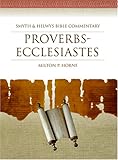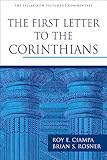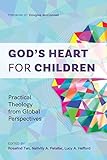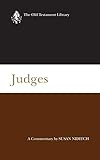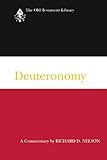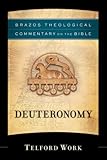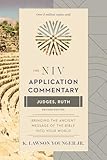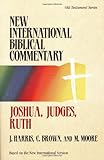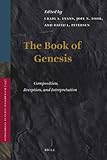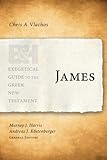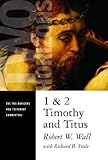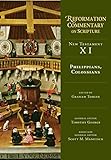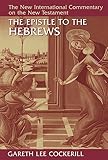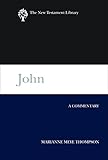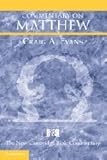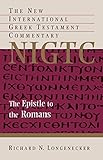Violencia Y Exterminio.Función Literaria Del Herem (חרם) Enlas Escrituras Hebreas
Material type: TextPublication details: Johannesburg South Africa South African Theological Seminary 2019Description: 188 pages PDF A4 Abstract, TOCDissertation note: Master of Theology (Mth) South African Theological Seminary 2019 Summary: The objective of this work entitled, Violence and Extermination. Literary Function of the Herem (חרם) in the Hebrew Scriptures, is to analyse the herem (חרם) as it appears in the biblical text and determine what its literary function is. The complexity of this concept, which lies in its ambiguity, results in it being found in ritual texts and the cult of Israel, both in military narratives, especially during settlement in the promised land, as well as in prophetic texts from Israel. The study of this term can help us understand the stories of complete annihilation of different peoples, not only of all human and animal life, but also of their material objects. Since this extermination device can come from God's mandate, especially those who inhabit the land of Canaan at the time Israel receives it in possession of Yahweh, its study will help us address the problem of divine violence. The work consists of four chapters: Chapter I, Violence, Idolatry and Divine Image; Chapter II, The חרם in the texts of the Hebrew Bible; Chapter III, Wars of the Lord and the application of חרם; and Chapter IV, The Land of Yahweh and חרם.In the first chapter, human violence and its direct relationship with idolatry are analysed. How this violence is installed until it becomes structural and grows without continuity solution. Israel does not escape this human reality. On the contrary, its birth as chosen people of Yahweh is in the context of its submission to 7the oppression and violence exerted by Egypt. Its liberation from the violent oppressor implies demonstration of power and a violent response that Yahweh, their liberator, must exercise. It is tried to distinguish then what is the concept of violence that predominates in the Hebrew thought. Idolatry disfigures the true face of divinity, while exalting the violence that rejects God. Directly associated with idolatry appears the sacrifice and although in Israel it has also been a divine institution, justice and law tend to overcome it in a process of spiritualization. Finally, the character of Yahweh and its ambiguities are verified, as interpreted by Israel and evolves in its own thinking. The second chapter studies each of the texts in which the חרם appears in each of the books of the Hebrew Bible and the associated terms. In this way, the use of חרםis analysed by canonical order of appearance in the Pentateuch, Deuteronomist history, chronicle history and the prophets of Israel. The third chapter focuses on the image of Yahweh, divine warrior. Only the strength of this warrior will determine the fate of the people who escape slavery and must settle in the promised land. This one, fights the wars of Yahweh, that concretize his plan in history. The application of חרםby Israel and its neighbours and its meaning is then studied. The last chapter addresses the religious message implicit in the חרם . The elements provided by archaeology that studies the time of Israel's settlement on the land are analysed. Then, we try to discover what is the relation of the application of the חרם and the land that is owned by Yahweh and to whom he wants 8to give it in possession. The role that foreigners and Israel itself play in these stories is studied. The conclusion of the work shows that for the study of חרםit is necessary to consider two hermeneutical levels. The first corresponds to the military characteristics that predominate in the Deuteronomist’s accounts and the rituals associated with the priestly ministry. On the second hermeneutical level we note that the חרם functions as an eschatological symbol, which will not only be present in the prophetic texts, but also in the accounts of the settlement of the land of the Divine Promise to Israel. The threat of חרם, because of the idolatry of men, is exerted over the whole earth, regardless of ethnicity. The strength of the religious message of חרם, is not the complete elimination of the other peoples, but lies in Yahweh’s call to the conversion of Israel of all their idols, who have never ceased to be present in the people, whose vocation is holiness to Yahweh.
TextPublication details: Johannesburg South Africa South African Theological Seminary 2019Description: 188 pages PDF A4 Abstract, TOCDissertation note: Master of Theology (Mth) South African Theological Seminary 2019 Summary: The objective of this work entitled, Violence and Extermination. Literary Function of the Herem (חרם) in the Hebrew Scriptures, is to analyse the herem (חרם) as it appears in the biblical text and determine what its literary function is. The complexity of this concept, which lies in its ambiguity, results in it being found in ritual texts and the cult of Israel, both in military narratives, especially during settlement in the promised land, as well as in prophetic texts from Israel. The study of this term can help us understand the stories of complete annihilation of different peoples, not only of all human and animal life, but also of their material objects. Since this extermination device can come from God's mandate, especially those who inhabit the land of Canaan at the time Israel receives it in possession of Yahweh, its study will help us address the problem of divine violence. The work consists of four chapters: Chapter I, Violence, Idolatry and Divine Image; Chapter II, The חרם in the texts of the Hebrew Bible; Chapter III, Wars of the Lord and the application of חרם; and Chapter IV, The Land of Yahweh and חרם.In the first chapter, human violence and its direct relationship with idolatry are analysed. How this violence is installed until it becomes structural and grows without continuity solution. Israel does not escape this human reality. On the contrary, its birth as chosen people of Yahweh is in the context of its submission to 7the oppression and violence exerted by Egypt. Its liberation from the violent oppressor implies demonstration of power and a violent response that Yahweh, their liberator, must exercise. It is tried to distinguish then what is the concept of violence that predominates in the Hebrew thought. Idolatry disfigures the true face of divinity, while exalting the violence that rejects God. Directly associated with idolatry appears the sacrifice and although in Israel it has also been a divine institution, justice and law tend to overcome it in a process of spiritualization. Finally, the character of Yahweh and its ambiguities are verified, as interpreted by Israel and evolves in its own thinking. The second chapter studies each of the texts in which the חרם appears in each of the books of the Hebrew Bible and the associated terms. In this way, the use of חרםis analysed by canonical order of appearance in the Pentateuch, Deuteronomist history, chronicle history and the prophets of Israel. The third chapter focuses on the image of Yahweh, divine warrior. Only the strength of this warrior will determine the fate of the people who escape slavery and must settle in the promised land. This one, fights the wars of Yahweh, that concretize his plan in history. The application of חרםby Israel and its neighbours and its meaning is then studied. The last chapter addresses the religious message implicit in the חרם . The elements provided by archaeology that studies the time of Israel's settlement on the land are analysed. Then, we try to discover what is the relation of the application of the חרם and the land that is owned by Yahweh and to whom he wants 8to give it in possession. The role that foreigners and Israel itself play in these stories is studied. The conclusion of the work shows that for the study of חרםit is necessary to consider two hermeneutical levels. The first corresponds to the military characteristics that predominate in the Deuteronomist’s accounts and the rituals associated with the priestly ministry. On the second hermeneutical level we note that the חרם functions as an eschatological symbol, which will not only be present in the prophetic texts, but also in the accounts of the settlement of the land of the Divine Promise to Israel. The threat of חרם, because of the idolatry of men, is exerted over the whole earth, regardless of ethnicity. The strength of the religious message of חרם, is not the complete elimination of the other peoples, but lies in Yahweh’s call to the conversion of Israel of all their idols, who have never ceased to be present in the people, whose vocation is holiness to Yahweh.
| Item type | Current library | Collection | Call number | URL | Copy number | Status | Date due | Barcode | |
|---|---|---|---|---|---|---|---|---|---|
 Thesis
Thesis
|
South African Theological Seminary Online Resource | Electronic Holdings | Link to Resource | 1 | Available | 0000000011334 |
Master of Theology (Mth) South African Theological Seminary 2019
There are no comments on this title.
Log in to your account to post a comment.

